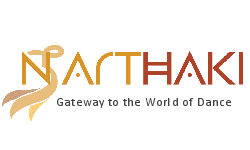 |
 |
| Through
the centuries, the terracotta figures of Paharpur and Mainamati, the rock-cut
sculptures, the friezes of Vishnupur temples and some rock paintings point
to a profusion of visual manifestations of Bangla dance tradition. Alongside,
the evidence in Charyapada and the various Mangala Kavyas corroborates
the existence of a rich dance style in the middle ages where practitioners
were often devadasis, common to other parts of India.
('A temple offering' by Utpal K Banerjee, Pioneer, New Delhi, April 25, 2003) |
| In
some ancient Tamil works, pure dance is called Chookkam. This term is used
today only in Nangiar Koothu, Chakyar Koothu and Kudiyattam.
(Nirmala Panikar, 'Nangiar Koothu-a dance theater of the Nangiars of Kerala', Nartanam Vol II #3, July-Sept 2002, p 47) |
| Both
the Gita Govinda and Sangita Ratnakara traveled to all parts of India.
The former reflects the popularity of the theme in all parts of India while
the latter reflects the changes in the technique of dance.
('Indian Classical Dance' by Kapila Vatsyayan) |